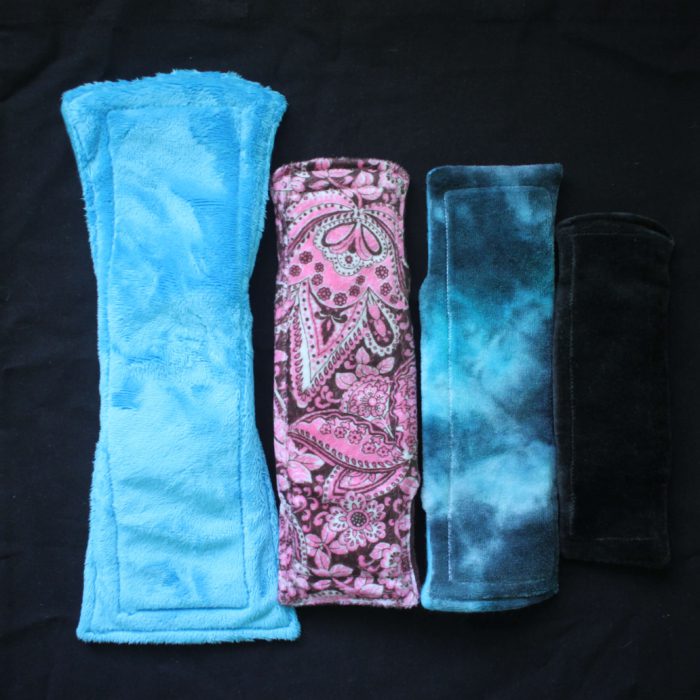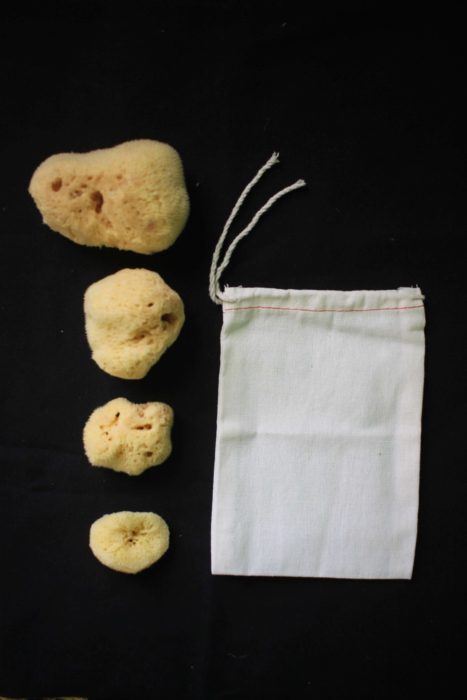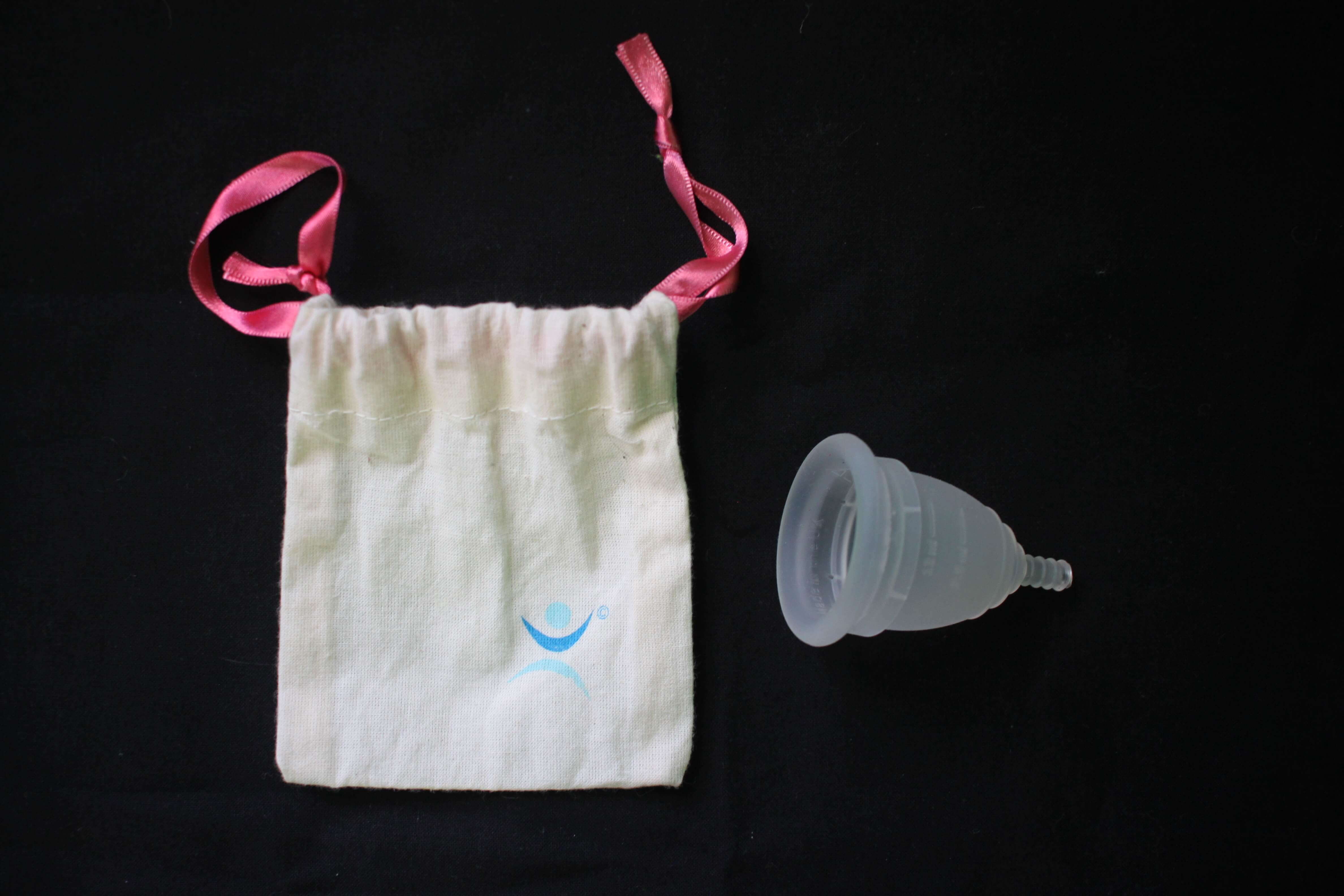Let’s face it: our periods undoubtedly create a huge environmental impact. It’s good to be conscious that all conventional pads and tampons we have ever used are still in existence. An average woman uses around 11 000 sanitary products in her lifetime which is a vast amount of waste.
The good news is that nowadays we have many options to switch to eco-friendly period care. If you’re reading this, you’re probably concerned about the environment and your own health and looking for ways to make a difference. In this post I will write about the risk of using conventional hygiene as well as give you a list of eco-friendly period products I have tried. As some of them can be more useful in our daily life, not all will come up as practical when we are on the road. Therefore, I will also give a special place for particulars on how to have eco-friendly period while traveling. Let’s get started!
Why you should switch to eco-friendly period care?

We all want our beaches to like like that, right? Meanwhile, Marine Conservation Society reveal that on average, 4.8 pieces of menstrual waste are found per 100 metres of beach cleaned.
Do you know what is inside the conventional cotton pads and tampons? Most of them are a combination of plastic, rayon, bleach, and other chemicals plus cotton, which consumes 22% of worlds pesticides while planted only on 3% of the world’s lands. Not to mention it requires gallons of water causing a huge environmental issue in Central Asia, where it mostly grows. All these toxic and cancerogenic chemicals I used to put in my body. Horrifying is the fact that manufacturers don’t have to mention all the ingredients of hygienic products on the label. Those secrets are worth multi-billion dollar business, even though could be making women sick. Yet, most woman continue exposing their bodies to these products month after month.
The dirty business
We have been raised in a society of single use products and a concept of “out of sight, out of mind.” When we throw something away, doesn’t mean it’s really gone. The gross truth is that we have created a mountains of used sanitary products which are still in existence and will NEVER fully decompose. Plastic takes around 500 years to decompose leaving harmful chemicals around, but some of the microplastic parts will always remain plastic. As we never know where our waste will end up, our disposals are on the landfills, beaches, oceans, harming the soil, water and wildlife. When I think of it now, being conscious of what I have contributed to, I am shocked that these things are not forbidden.
Not to mention we are supporting corporations which do not work ethically. Sadly, huge companies dominated the world’s markets, and conventional products are most of the time the only option to choose in a regular store. In my country, Poland nowadays it’s changing but still most of the eco-friendly period products can be found only in the eco-stores. Thinking of developing countries, they simply have no choice. Here I would like to mention The Cup, a non-profit organisation which provides underprivileged girls worldwide with menstrual cups and education on sexuality and reproductive rights. If you feel like supporting this idea, you can donate on their website.
How to be eco-friendly on your period?
Taking care of our well-being is extremely important and simple choices we make can have a huge impact on our health as well as the environment. Thankfully we have a huge green revolution going on, and switching to environmentally friendly alternatives is easy. From organic cotton to reusable products, I hope with this post each of you can find a suitable option for herself. I will also give details on having a eco-friendly period when traveling and tell you how was my experience.
Eco-friendly period pads and tampons
My first eco-friendly period alternative were organic tampons. It’s been a few years when I learnt about all the toxic chemicals in conventional pads and tampons. Back then, there was no other options such as reusable period products. Moreover, none of the companies was doing an organic version in my country, so everything came from import. It was quite expensive to buy organic tampons as it wasn’t as popular and accessible as now.
Eco-friendly period pads and tampons are no different from conventional when it comes to comfort and protection. They are just made out of organic cotton which was harvested in a sustainable way without pesticides and harming nature. Moreover, there are no toxins, cancerogen nor plastic so your body is not exposed to chemicals. Even though it is a single use item, and it’s still a waste, but it can go to compost and will quickly and completely biodegrade.
Along with the organic cotton, eco-friendly period pads and tampons will most likely come in plastic free packaging. Sustainable companies care to provide transparency and are open for an honest dialog with their customers. Now, I am using organic tampons from Dame and I am impressed about the quality of products and simple, yet elegant packaging out of paper. Dame have also created the world’s first reusable tampon applicator. This just saves a whole bunch of single-use-plastic for our planet! Congrats for that!
Are eco-friendly period pads and tampons good choice when traveling? Definitely yes. They don’t take much space and are environmentally friendly.
Reusable pads
 Let’s talk about reusable period products which is a growing trend along with no waste movement. To be honest I was never fan of the pads. They were never making me forget that I am on my period, and the amount of waste is the highest you can possibly create during menstruation. I decided to give a try to reusable period pads to see if it will be better. Indeed, the experience with eco-friendly period pads was different than with the regular ones. Why?
Let’s talk about reusable period products which is a growing trend along with no waste movement. To be honest I was never fan of the pads. They were never making me forget that I am on my period, and the amount of waste is the highest you can possibly create during menstruation. I decided to give a try to reusable period pads to see if it will be better. Indeed, the experience with eco-friendly period pads was different than with the regular ones. Why?
According to Woman’s Environmental Network menstruation pad contains 90% of plastic. Despite the commercials advertising how breathable are conventional pads, air does not go well through plastic. It turns out that plastic is the reason of an unpleasant odour. I didn’t experience that using eco-friendly period pads, they were definitely more breathable and I could forget about smelly trash bin. After using I rinse the cloth pads in cold water and then add to the laundry.
There are plenty of companies which offer variety of choices and sizes like Glad Rags which come with useful inserts depending of your flow. I have also tried reusable cloth pads from Tree Hugger – a family owned business which make really cute hand made pads, which are thicker but really soft.
As reusable cloth pads convinced me to use pads on my period, I wouldn’t pack them for any trip. I just can’t imagine storing dirty pads in my backpack as while traveling I am not always able to wash and dry quickly.
Talking about drying, it’s another thing which sounds difficult on the journey. I don’t have a problem with that at home, but I would be embarrassed to wash and dry them in public. I just cannot imagine staying with locals on couch surfing and putting dirty pads into a washing machine with their clothes, what often happened when I didn’t have enough of mine. Hanging pads in front of the house to dry would make the whole village to come and watch. 😛 What’s more, taking 5-10 cloth pads takes much more space then the other eco-friendly period products, so personally I don’t find them practical for a trip.
Eco-friendly period panties
 I read many reviews on the reusable period panties and all said they are magical. I decided to try those from WUKA, and I can confirm they work like magic. They look like regular panties but with a bit of padding which absorbs liquids perfectly. If you are switching from pads, you will feel a great difference in comfort of sleeping or doing sport. They make period feel much more comfortable.
I read many reviews on the reusable period panties and all said they are magical. I decided to try those from WUKA, and I can confirm they work like magic. They look like regular panties but with a bit of padding which absorbs liquids perfectly. If you are switching from pads, you will feel a great difference in comfort of sleeping or doing sport. They make period feel much more comfortable.
The only disadvantage is that the one I have are made of polyester, which is basically plastic. To be clear, it’s polyester from recycle plastic. Still, even though they absorb liquids so well so they look “clean”, I had to change them more often because of the odour.
Eco-friendly period panties seem to be a bit better solution for traveling, as they look like regular underwear. However, taking a few of them for the whole period would take a lot of space as they are quite thick. I would take one or two for the most heavy flow nights, though.
Reusable sea sponges for menstruation
 It’s been recently I have learnt that I can put a dead creature into my vagina. I wasn’t convinced when I read that sea sponges can cause a serious inflammation if not cleaned properly from the sea sand. However, as I wanted to write this guide on eco-friendly period while traveling, I intended to test before I write about it.
It’s been recently I have learnt that I can put a dead creature into my vagina. I wasn’t convinced when I read that sea sponges can cause a serious inflammation if not cleaned properly from the sea sand. However, as I wanted to write this guide on eco-friendly period while traveling, I intended to test before I write about it.
I received a set of sponges from Jade & Pearl which is a small company harvesting sponges in sustainable way, cleaning them from sand and trimming to a proper shape. I really felt weird putting it in and not feeling comfortable having no string to put it out. It’s a very interesting alternative but it definitely takes time to get used to applying and taking out. I am still in front of this way and I am not sure I will continue. Thinking that other options are just so much easier and safer, I prefer to leave the poor sponges alife.
Menstrual cup
Eco-friendly period cup is recently a star of a “green” revolution. It’s a small piece of medical silicon which lasts for up to ten years so saves a lot of money. Only one cup is enough for menstruation as you simply wash it and put in again. Of course, you need to remember to store it in a dry place when you don’t use it and sanitize before and after each menstruation. It seems that menstrual cup can be the best eco-friendly period product while traveling. It’s tiny, light and practical as we can change the cup even every 12 hours.
There is big BUT, though! It’s not as easy to start using it as I thought. I wish to travel with just a small menstrual cup, but I simply can’t get through using. It’s been 6 periods I am struggling to put it in properly. When I finally manage, it doesn’t feel comfortable and taking it out is even more difficult. Getting to know my vagina in details and how exactly our blood looks like are part of the experience. I am still not sure if I manage to be friends with a menstrual cup and really wish it’s easier to start using it. For now I simply gave up trying as I am having so many other eco-friendly period products that are so easy to use.
Have you already tried a menstrual cup? Please share your experiences in the comments.
DIY menstruation products
Along with no waste movement growing, I noticed that more and more girls make DIY menstruation products. Sewing their own pads is at the same time recycling old towels, sheets or clothes. I even saw on Etsy hand-made knitted menstrual tampons from organic cotton. These are impressive ideas of how to create some eco-love by yourself. Eco-friendly period while traveling is possible also if you DIY at home and take it with you. Feeling inspired?
How much does the eco-friendly period cost?
It’s a myth that eco-friendly period care is more expensive than the conventional one. Woman has between 400 and 500 periods in her lifetime. Thinking that it’s approximately 2000 bloody days, multiply how much you spend for one day of menstruation times 2000. Reusable period care may look expensive to get but they last for years and respectively create less waste. Disposable organic pads and tampons are indeed, much more expensive then the regular companies. However, you pay for no harm for nature, support small business and putting no toxins in your vagina. That’s an investment in your health.
In my opinion, eco-friendly period products are absolutely worth a try. Make the choice to be kinder to your body and our planet. Change starts with me and you, and then spreads as we tell our friends and family members about it. Together we can make a big difference. Get started with eco-friendly period products today. Which ones would you choose for traveling?
The Bee is a nature lover and tea addict. Loves the idea of slow life and responsible traveling, constantly trying to improve to bee more eco-friendly. Appreciates old cultures and traditions, loves to immerse with locals, listen to ethnic music as well as taste regional food and drinks. Her favorite spots while traveling are family houses and street markets.


